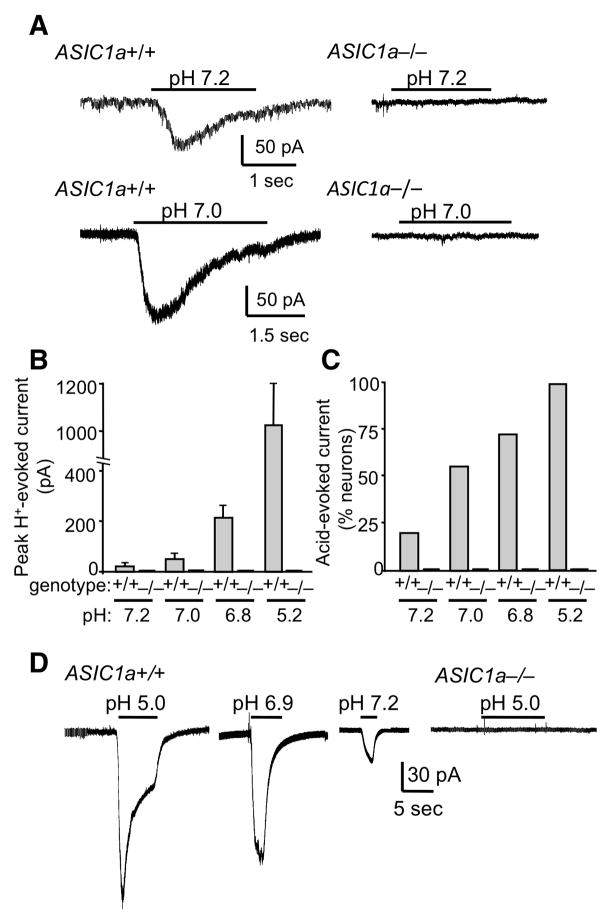Figure 4.
Acid-evoked currents in amygdala neurons are mediated by ASIC1a. (A) Representative examples of responses to pH 7.2 and 7.0 in cultured amygdala neurons from ASIC1a+/+ and ASIC1a−/− mice recorded by whole-cell voltage clamp. (B) Mean peak current evoked by increasingly acidic pH levels in cultured amygdala neurons from ASIC1a+/+ and ASIC1a−/− mice. From left to right, ASIC1a+/+ groups included 14, 17, 19, and 9 neurons. ASIC1a−/− groups each included 7 neurons. (C) As pH was lowered, a greater percentage of amygdala neurons from ASIC1a+/+ mice exhibited acid-evoked current. None of the ASIC1a−/− neurons showed acid-evoked current. (D) Examples of acid-evoked currents in basolateral amygdala neurons in acute slices from ASIC1a+/+ and ASIC1a−/− mice. The number of cells exhibiting acid-evoked currents versus the total number tested at each pH value were as follows: (ASIC1a+/+: pH 5 = 16/21, pH 6.9 = 6/9, pH 7.2 = 2/5), (ASIC1−/−: pH 5 = 0/9, pH 6.9 = 0/7, pH 7.2 = 0/4).

